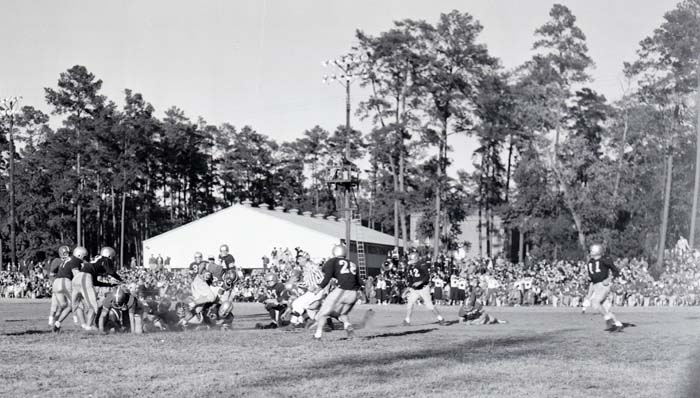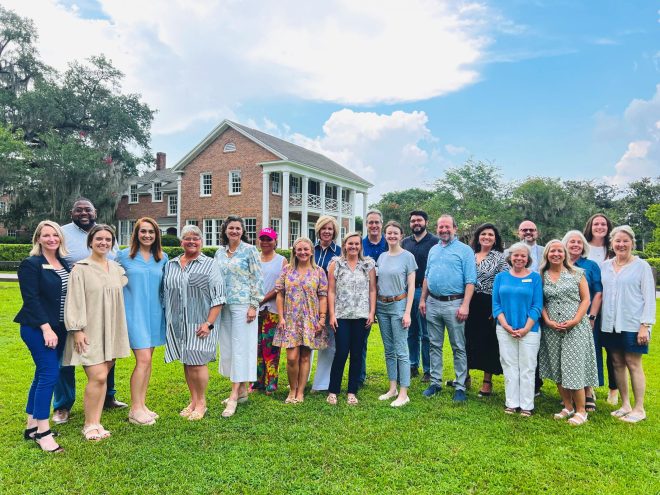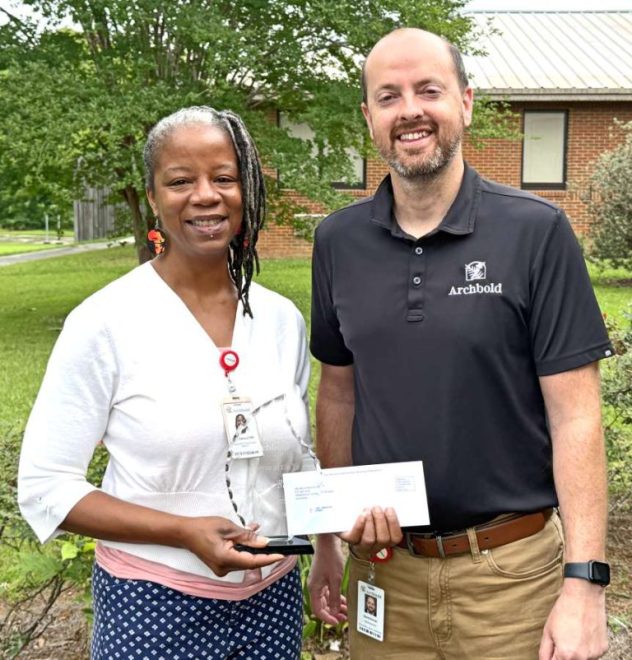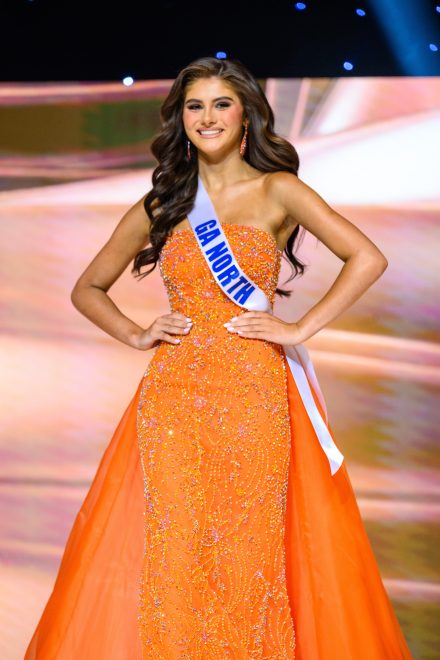FOOTBALL 2017: Battlegrounds — Renovations add new chapters to local football history
Published 7:15 am Friday, August 18, 2017

- Thomasville plays Cairo at Veterans Memorial Stadium, 1962.
THOMASVILLE — In South Georgia, high school football is religion, and the cathedrals that house thousands of fans in their grandstands every week are much more than just places to watch a sporting event.
Trending
They are places where communities gather, where elation and heartbreak are felt, and perhaps best of all, where champions and legends are born. In Thomas County’s case, they have been the stage of a Heisman Trophy winner, a national championship team and a dynasty right before the turn of the millennium.
At Veterans Memorial Stadium and Thomas County Stadium, every autumn Friday night represents a chance to be a part of something bigger. For over a century, local stadiums and fields — some of which no longer exist — have been the stage for the drama that is football. The current fields have seen a progression of modernization as time flew by and needs changed. This year will be no exception.
During the offseason, all four local stadiums were on the receiving end of some kind of improvement — some minuscule, some very noticeable. Those recent renovations add just another chapter to the history of the places where the Friday night lights shine bright.
Trending
Beginnings
Football in Thomasville started way before Veterans Memorial Stadium even broke ground. The first mention of football in Thomas County goes all the way back to 1895, when a team from Thomasville played a team from Valdosta at Athletic Park, which was located on Spair Street. Thomasville High played there in 1914.
East Side School, whose building now houses the Thomasville Center for the Arts, hosted some of the first Thomasville High School football teams on its field beginning in 1915. It stood around where the Bulldogs’ current field is, and was described as ‘rough, rocky and sloped.’
There were no stands, with just a rope separating fans from the action. It wasn’t exactly the safest arrangement — one player ran full speed at it and sustained a concussion after flipping right over.
From 1927-47, the Bulldogs called Municipal Stadium their home. Located on Fletcher Street where a water treatment plant now stands, that stadium served multiple uses. In addition to football, It was also the home to development league baseball teams for the Baltimore Orioles, Brooklyn Dodgers and Detroit Tigers. Douglass High School, which came to be because of segregation, also played football at Municipal Stadium from 1925-49.
That field saw its end in a rather bizarre way two years after the Bulldogs left. In the spring of 1950, Municipal Stadium’s entire grandstand caught fire and burned to the ground. The official cause of the incident was electrical.The fire caused an estimated $50,000 in damage, which would be around $500,000 today.
The Dog House is born
In November 1948, Veterans Memorial Stadium opened next to what is now MacIntyre Park Middle School, originally the site of the high school until the current campus opened in 1974. When the stadium opened, the home side was located where today’s visitors’ section is. The Bulldogs defeated Albany 21-19 in the first football game played there, earning a chance to play Fitzgerald for the South Georgia Championship, where they fell 7-6.
Thomasville has won a total of four state titles in their current home. As the city football program grew and became more successful, more and better seating was necessary, and in 1972, Thomasville expanded the capacity with a new home side, replacing the small visitors’ bleachers that once stood there.
Jim Rayburn, the Bulldogs’ current radio color commentator and stat taker since 1989, has been around the program all his life. He graduated from Thomasville High in 1972, around the same time the renovations took place.
“We were in the biggest classification back then and the crowds were so much that they built the home side so the stadium would hold more people for Valdosta, Moultrie and places like that,” Rayburn said.
The Bulldogs gave all their spectators quite a show right after the improvements, winning back-to-back state championships in 1973 and 1974. The latter year was also notable for a national championship, with the Bulldogs led by running back William Andrews.
“It was jam-packed at 6:30 before an 8:00 game,” said Mike Gammons, who was a defensive lineman for Thomasville’s consecutive championship runs. “It was electric from start to finish. We’d come out to the field just to warm up and people would be hollering and screaming.
“We were the first class to integrate and we were the first class to wear the red and gold. We feel like we brought the town and the school back together. When you win, it overcomes everything — race, prejudice — everything.”
Despite the kind of atmosphere that Veterans Memorial hosted, it was not without its flaws.
“The surface has always been a problem,” Rayburn said. “It was built kind of down in a hole. Especially the Jackson Street end, to this day, would hold water. If you had a rainy football season, it would turn into nothing but a mud bowl.”
The Bulldogs were not the only ones to experience some great moments at Veterans Memorial. Douglass won state championships there in 1959 and 1967 before its students integrated. Thomas County Central lost 10 straight games to Thomasville to open the all-time series, but in 1976, Veterans Memorial was the stage for the Yellow Jackets’ first win over the Bulldogs — a 7-3 squeaker.
The Jackets build a Nest
When Central’s football program began in 1959, it had no home field to call its own. For the team’s first seven years, the Yellow Jackets shared Veterans Memorial with the Bulldogs, but in 1966, Thomas County Stadium — more affectionately known as The Jacket’s Nest — was ready for action.
The Yellow Jackets defeated Pelham 35-7 for their first win there on Sept. 9, 1966. Quarterbacking the Central offense on that historic night was Marty Willett. Coincidentally, his father designed the lights for the stadium. Now retired and living in Jacksonville, he still sees that game as one of his proudest moments.
“We were exhilarated, exuberant,” Willett said. “Having our own stadium was not the beginning, but just a boost in our school pride. We always had it. I still can’t wear red. We were all proud, but that stadium made us prouder.”
Magnolia High School’s team also played its last two seasons at The Jacket’s Nest after stints at Varnedoe Stadium (now operated by Thomas University) and Veterans Memorial.
In its earlier years, The Jacket’s Nest was fairly modest. It was still big enough in 1975 to wow a 12-year-old Randy Young, who is entering his 31st year as Central’s radio play-by-play announcer.
“The impression was that it was huge,” Young said. “When you walk in, you look around and there’s several thousand people there dressed in blue and gold. It was the first time I felt like I was a part of something bigger than me.”
Central enjoyed some successful seasons in the 1970s and in the late 1980s, when eventual Heisman Trophy winner Charlie Ward graced highlight reels. Before the 1990s, The Yellow Jackets had won four region championships. Renovations were always a discussion point, but the Yellow Jackets weren’t consistently successful enough to warrant it.
That all changed in 1992, when Central won its first state championship, kicking off a unprecedented run of success throughout the decade under head coach Ed Pilcher. After winning it all again in 1993 and 1994, then-Thomas County Schools superintendent Terry Solana began to push for an expansion.
“It was evident that if our program was going to have the type of success we experienced during that stretch, we had to expand what we had at our stadium,” Young said. “There was nowhere to put everybody. We were having to pull temporary bleachers in and it was still elbow to elbow.”
The renovation was major, adding more bleachers, the distinctive blue chair-backed seats and a much more spacious press box. After two more titles in 1996 and 1997, as well as some deep playoff appearances in the early 2000s, Central added video capabilities to its scoreboard in 2006.
Last season, The Jacket’s Nest celebrated its 50th anniversary. Willett and his teammates signed the ball from the very first win all those years ago, and it was lost to history. When it was found, an on-field ceremony brought some of those former players back to the place where a lot of their Yellow Jacket pride began.
“They discovered that the game ball had been given to the board of education,” Willett said. “One thing led to another and there we were, 17 members of that team 50 years ago on the field giving that ball back to the school to be put on display. To me, that ball is as important as all of Charlie Ward’s things.”
New bells and whistles
This year, all four fields will have new features or tuneups of some kind. Thomasville’s home field has the most noticeable changes — a new Astroturf playing surface on top of a new drainage system, a new sound system and new bathrooms. It’s all part of a $1.65 million renovation package that will continue next year with a new press box, which will replace the current one built in the 1970s.
“I believe it will save us money in the long run because of the maintenance,” Rayburn said. “Every few years you had to redo the surface anyway and that costs money.”
The Jacket’s Nest also will have some changes, beginning with a new brick-laden entry way and ticket booth to replace the old chain-link fence. The press box also saw some internal changes. Inside the stadium, a massive new scoreboard with a modern video board overlooks the field on the Jackson Street side. The old screen was taken out, but there are now two scoreboards, one on each end.
“The new board is going to top (the old one),” Young said. “We’re going to be able to do more than we’ve ever been able to do.”
At Brookwood School, Warrior Field’s improvements are more subtle. The field’s crown was taken out and a better drainage system was put in. Cairo added two new scoreboards over both of West Thomas Stadium’s end zones to replace its single aging one next to the field house.
Despite all those structural changes, one thing will always stay the same — the communities gathering in one place to be a part of something bigger, just as Young remembers during Central’s first win against Thomasville.
“I remember just being hooked at that point and thinking to myself, ‘This is big — and I’m a part of it,’ he said. “Color, economic standing, it didn’t matter who you were — if you had colors, blue and gold or red and gold, you were a member of the club.”





